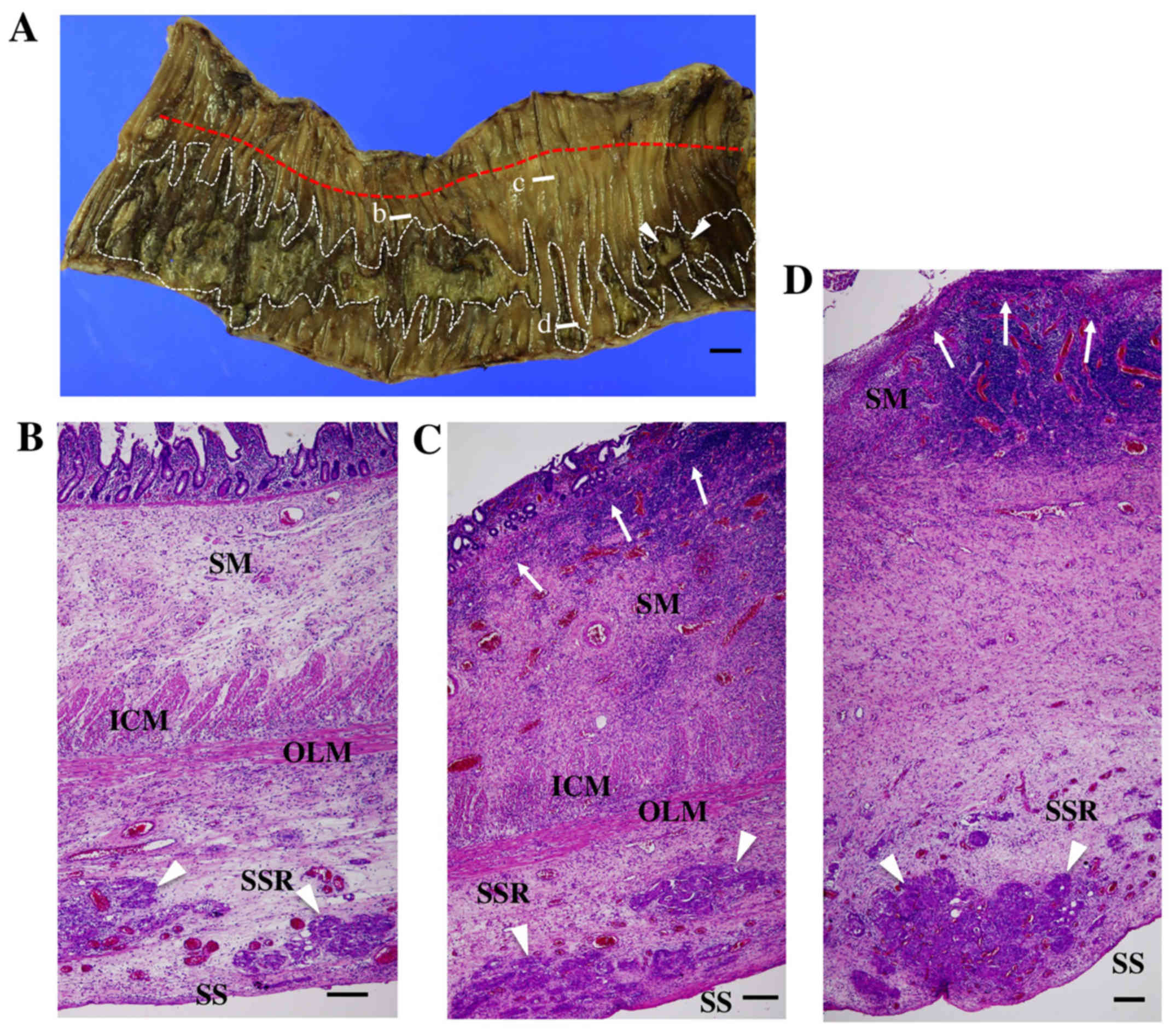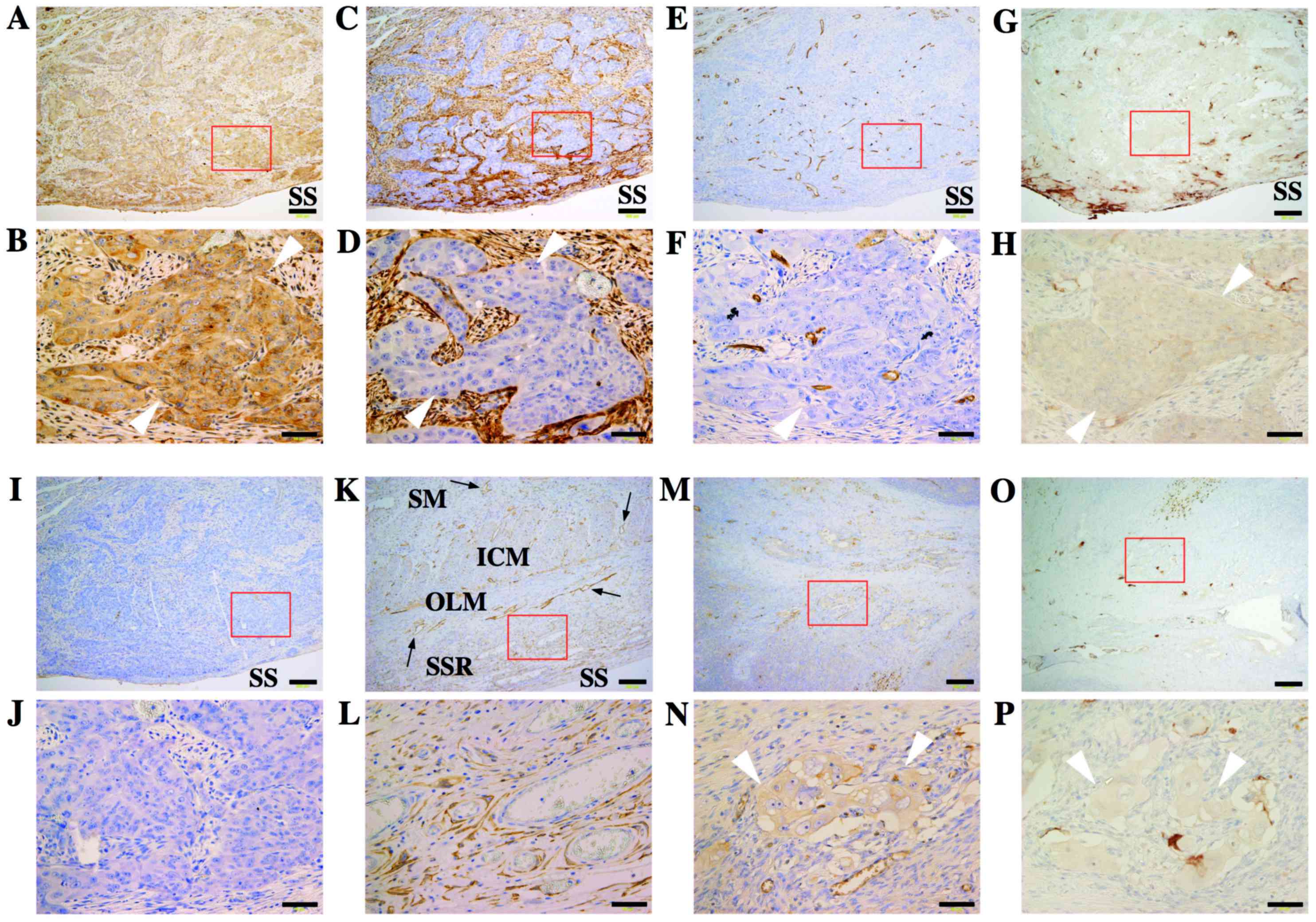Subserous invasion of VEGF‑C‑producing cancer cells is a possible risk factor for ileal ulceration in the non‑metastatic mucosal layer during bevacizumab‑combined chemotherapy for recurrent ovarian cancer: A case report
- Authors:
- Published online on: September 1, 2017 https://doi.org/10.3892/mco.2017.1403
- Pages: 820-824
-
Copyright: © Matsumoto et al. This is an open access article distributed under the terms of Creative Commons Attribution License.
Metrics: Total
Views: 0 (Spandidos Publications: | PMC Statistics: )
Total PDF Downloads: 0 (Spandidos Publications: | PMC Statistics: )
Abstract
A 65‑year‑old woman received chemotherapy using paclitaxel and carboplatin following optimal debulking surgery for ovarian cancer stage IV. Five months later, intra‑abdominal recurrence was diagnosed, and second‑line chemotherapy using nogitecan and bevacizumab was administered. After five courses, the patient presented with a symptom of subileus and subsequent intestinal perforation occurred. An emergent surgery revealed two perforation sites and longitudinally extended ulcerative lesions in the ileum. Pathologically, although metastatic sites were not observed in the submucus layer just beneath the ulcers, there were a number of vascular endothelial growth factor (VEGF)‑C‑positive cancer cell invasion sites along with marked edema and an increase of the lymphatic endothelial cell marker ‘podoplanin’‑positive cells in subserous regions. Since bevacizumab is able to inhibit VEGF‑A, but not VEGF‑C, and induce compensatory increase in VEGF‑C production, these findings suggest that the local disturbance of lymphatic circulation in the subserous regions by VEGF‑C‑producing cancer cells is a possible risk factor for the development of intestinal ulceration and perforation during bevacizumab therapy.











